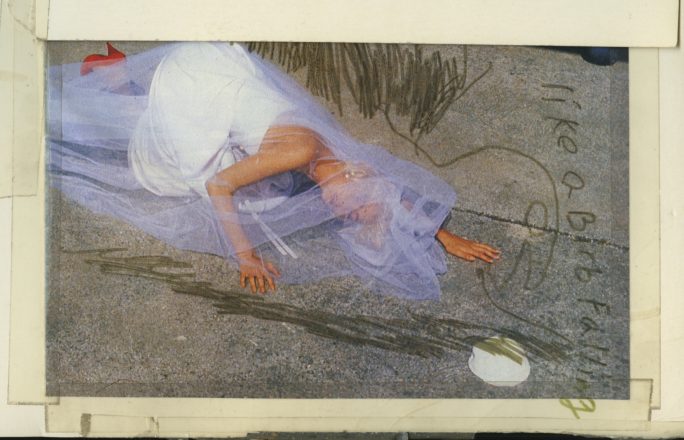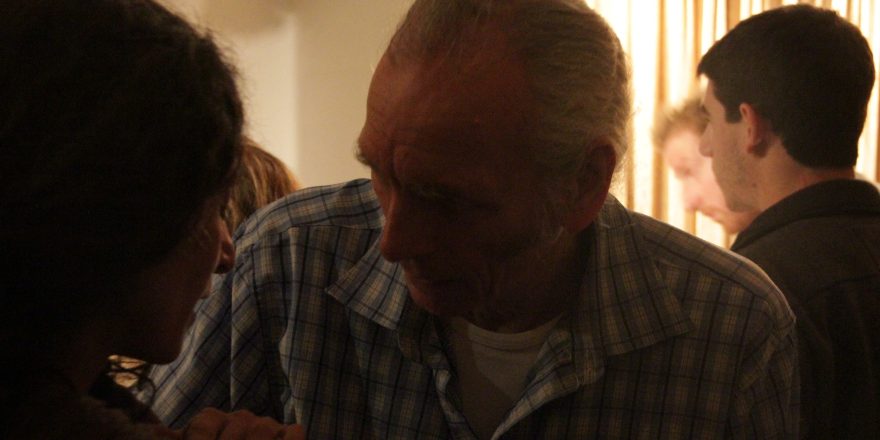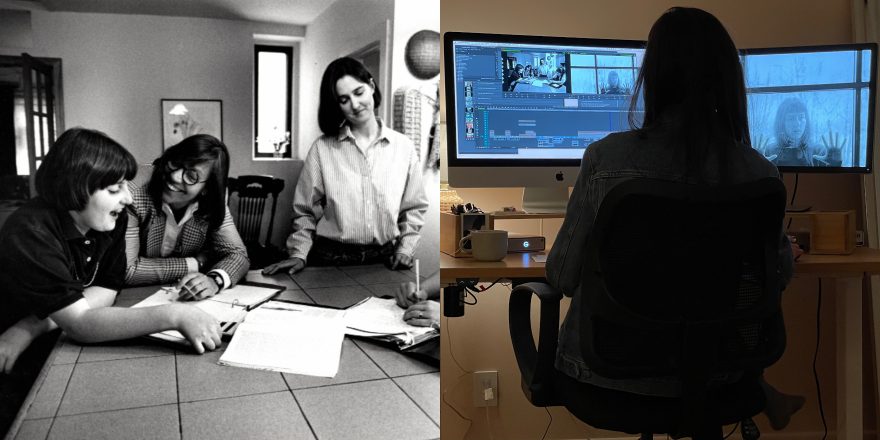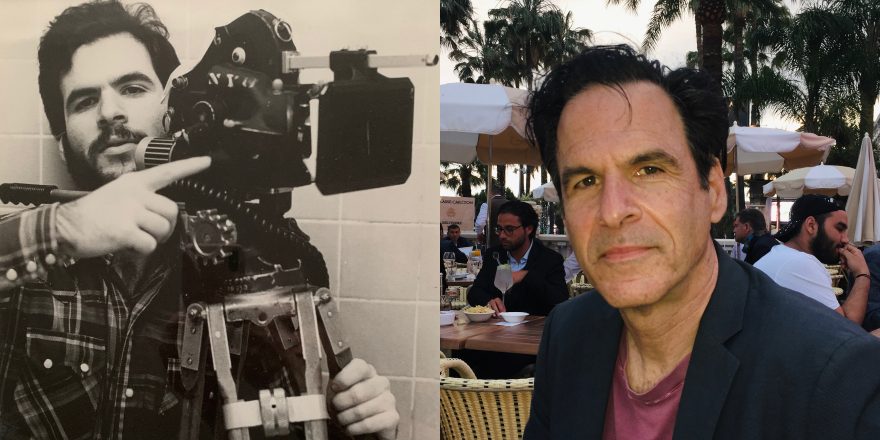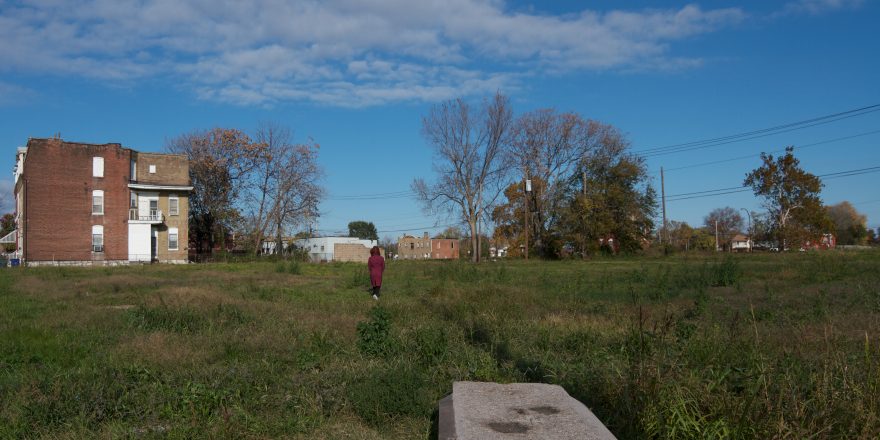A few months before I started my first job as an adjunct professor, I started editing and associate producing Daniel Hymanson’s debut feature, So Late So Soon. The documentary depicts two Chicago artists, Jackie and Don Seiden, a half-century into their marriage, as they look back at their life together and contend with the deterioration of their bodies and beloved home.
As the film’s narrative took form and evolved, so did my approach to teaching students. In particular, I came to regard the film’s protagonist, Jackie – a fellow artist and educator – as a kind of model. She always moves towards feeling, whether it’s joy, longing, or anger, taking each as an opportunity to learn more about herself and her relationships with others. Editing her experiences into a story intertwining art and life began to resonate for me as a teacher, too.
I’m first and foremost a practicing artist and, thanks to Jackie, I came to see that as an asset for my teaching. I started inviting my colleagues and collaborators, including Daniel, into my classroom. We’d talk about mistakes we’d made, situations that made us giggle, and artists we admired. Generosity, honesty, and openness about my own perspectives became staples of my approach. My parents are artists. I was born in Atlanta, and I’ve lived in France, Mexico, and Spain as an adult. My best friend died when I was 21. More often than not, I’ve dated men decades older than myself. These dimensions of my personal life have always featured in my filmmaking, but I started integrating themes of geographic displacement, mourning, art, and cross-generational intimacy into my curricula, too. This fed my soul, which in turn electrified my teaching. My students began bringing their own personal passions – for dogs and cats, for turkey snack plates, for gemology, for makeup and costumes – to our exchanges. As a result, I’ve come to feel greater harmony between my filmmaking, teaching, and personal life.
Teaching is two-pronged – it involves both honoring my own feelings and committing to sharing them with students. Giving is an end in itself. In archival material and contemporary footage, I watched Jackie lean into her emotions, tastes and instincts, both in her own artwork and with her students. Speaking her mind openly – but also with generosity and self-awareness about limits to her subjectivity – allows her to deliver students truth and inspiration. Jackie doesn’t hesitate to respond to students’ work frankly, always believing in their innate, infinite capacity to learn from feedback and to flourish. Critique is a form of care for her; progress is a matter of each student finding and honing their own creative language. Consequently, many of the artworks her students produced – some of which appear in So Late So Soon – speak to earth-shattering emotional upheavals and the magical power art can have, helping people sublimate pain into joy.
In one scene from the film, Jackie stares at a child’s drawing that’s been hanging in an upstairs hallway for years. She explains that it was from a class she’d taught at the Art Institute of Chicago, where she’d given students “tortured-looking” objects without any instruction. Jackie has always loved how tormented the figure looks, with her huge mouth and broken-down teeth. But today, for the first time, she notices tears beneath the girl’s eyes. She’s stunned: “She’s this very special, sensitive girl and if she put tears in there…Well, I can’t guess anything about her. But that’s an added beautiful element.”
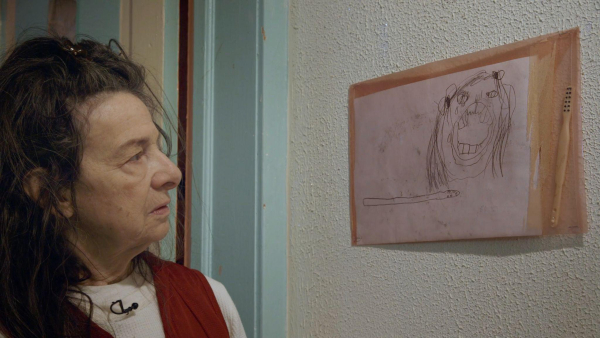
I love how “her” might refer both to the young artist and the girl she depicts. Jackie throws her soul and mind into the universe of the drawing, closely unraveling its specific visual language. Yet she also recognizes how outside factors might be affecting her gaze, independent of the girl’s reality. Perhaps Jackie’s recent experience with a dizzy spell and a near fall is impacting how she sees the image. What’s certain to her, though, is the sheer beauty of the artwork.
Jackie has profound respect for her students – she sees them as fellow artists, regardless of age. In her eyes, a person’s soul stays intact across the span of their life. Along similar lines, I have seen a method of critiquing art, called “descriptive review” (which my artist colleagues Ben Ripley and Meryl Feigenberg adapted from educator Patricia Carini), resonate equally with students ranging in age from nine to 60. It consists of first describing an artwork – a text, a painting, a piece of music, a film – in purely descriptive terms. In a second round of commentary, we begin to make connections within the artwork; in a third, we interpret those descriptions and associations. In a fourth and final round, we may incorporate prior knowledge we have about the makers as we develop an overarching narrative about our understanding of the work. The exercise is about centering and honoring the art itself. This is akin to my work as an editor, listening to the rhythms and meanings intrinsic to footage without imposing external or premeditated expectations. My best work emerges from letting connections arise organically from the material, listening to what it wants for itself. I could say the same about my rapport with directors and with students.
Jackie taught me about kids’ resilience, depth, and complexity. No idea is too big for someone whom you believe in wholeheartedly. The horror of death – and the exuberance we conjure up in its defiance – figured in several of her teaching exercises, including one where students buried sarcophagi in the Art Institute courtyard. Similarly, my youngest students have astonished me with their heartfelt, curious, and thoughtful responses to films where death figures prominently, such as Jordan Lord’s documentary portrait I Can Hear My Mother’s Voice, Toby Bull’s first-person vignette Some Kind of Intimacy, Arthur Jafa’s gut-wrenching visual essay Love is the Message, the Message is Death, and Iliana Sosa’s fictional Child of the Desert. I hope that our work together might also act as a salve for when they face losses in their own lives.
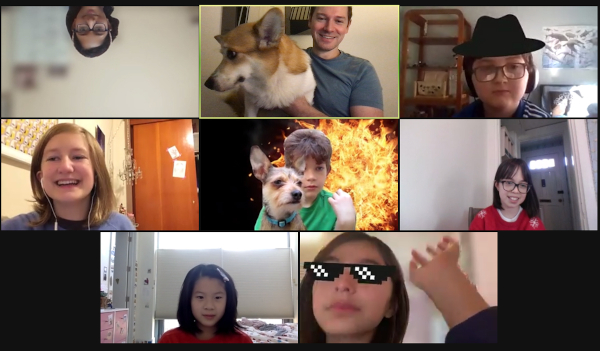
My approach has become similar across contexts – as an educator with students, as an editor with footage, as a producer or writer with directors, or as a director myself, engaging with the world around me. In each instance, I help guide feelings (others’, those onscreen, or my own) into the world according to paths that they chart out for themselves. As Jackie puts it, “Art is play and life is play – play is a very serious thing.”
Featured image is a drawing by one of Jackie Seiden’s former students. All images courtesy Isidore Bethel.


